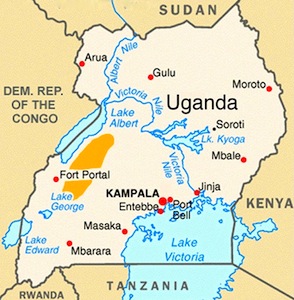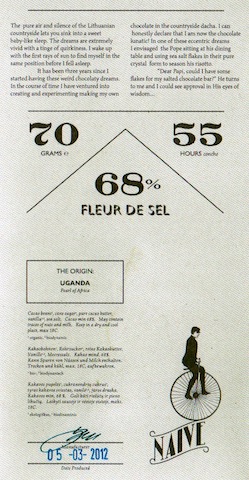 GEN’L FLAVOR – moderate to pronounced CQ (Chocolate Quotient or baseline cocoa flavor); acidity split between fruit, acetic & lactic acids; herbal, rare pepper / spice, & even floral traces; miscellaneous woods / bark / mushroom; beware of molds
GEN’L FLAVOR – moderate to pronounced CQ (Chocolate Quotient or baseline cocoa flavor); acidity split between fruit, acetic & lactic acids; herbal, rare pepper / spice, & even floral traces; miscellaneous woods / bark / mushroom; beware of molds
CHARACTERISTICS – decent methylxanthine ratio (theobromine-to-caffeine) of ~10:1; varying but generally medium-hi phenol content; good distribution of lactic & acetic acids; relatively low reducing sugars; better than expected fermentation index can check bitterness & astringency in balance… an overall character summed up best in a medium roast
In 1901, the British introduced cacáo to its Uganda colony at the southern tip along Lake Victoria bordering Tanzania. There they set up the Botanic Station of Entebbe. Mixed varietals were obtained from the Royal Gardens in England, sourced originally out of Trinidad in 1880/81. By 1911 field surveys listed “red” & “yellow” varieties randomly referred to as Forastero & Calabacillo, with some bearing Criollo in their midst.
Today the cacáo groves lie more to the western part of the country, conjoined in some way to those of Congo next door. They grow rather quietly in a country better known for genocidal sociopaths like Idi Amin & Joseph Kony — a gross caricature of Ugandans who are trying to eke out a living peacefully. The lone exception: Verticillium Wilt disease which devastates cacao in these parts, resulting in losses of up to a third & one reason why cacao has been rather insignificant here.





